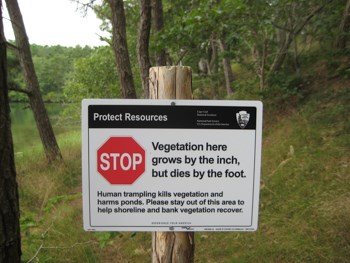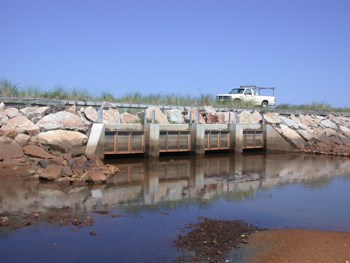|
There are few areas in the world that haven’t been impacted by humans to some degree. As soon as we were able to move around, the impact on the environment was profound as people sought natural resources for food, shelter, clothing, and other material goods. Eventually, as modern societies built cities, transportation networks, and industrial complexes, the human footprint became the dominant feature in most developed regions of the planet. 
NPS Photo Typically, ecosystem restoration projects seek to restore the naturally occurring physical, chemical, and biological components of degraded habitats and reestablish processes leading to ecological sustainability. In some cases, this involves controlling or removing damaging non-native invasive species from sensitive habitats. Other projects focus on reintroducing keystone native species, such as the American bison or timber wolf, into habitats where they have been extirpated. 
NPS Photo On Cape Cod, significant investments have been made over the past ten years to restore natural tidal flow to degraded salt marshes. In 2001, the Cape Cod Commission and Massachusetts Wetland Restoration Program released the Cape Cod Tidal Restriction Atlas. This landmark report inventoried road crossings over tidal streams and identified undersized culverts, which choked off tidal exchange to upstream marshes. Since then, Cape Cod towns, the Commonwealth, and several federal agencies have partnered together and marshaled the resources to replace many of these poorly functioning road culverts. So far, approximately 20 culverts have been replaced, restoring natural tidal exchange to more than 300 acres of coastal wetland habitat. Currently, plans are underway for additional tidal restoration throughout Cape Cod, including the Herring River Restoration Project in Wellfleet. Involving almost 1,000 acres of former salt marsh, the Herring River is the most ambitious and largest tidal restoration project in New England. |
Last updated: January 30, 2023
